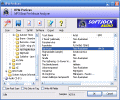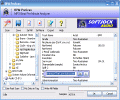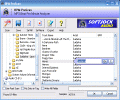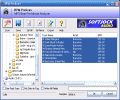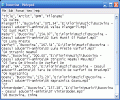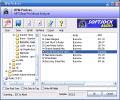Being a DJ does not mean just playing one track after another but playing them in such a sequence and in such a way that the songs appear to come "naturally" one after another and no inconsistency is being heard. Well, this would almost poetically describe what mixing is about.
Technically, DJ-ing relates to two very important things: key and BPM (Beats Per Minute). Key analyzing is used so that you prevent playing in sequence 2 songs whose musical keys are dissonant - a song in A Major will not sound well if played after another whose key is F Minor. The Camelot notation and theory simply says (and proves) that such a sequence is wrong. Well, having said that about keys, it's time for a little BPM theory. Basically, the BPM tells about how fast is a certain track played. Obviously, a ballad at 110 BPM will be a lot slower than a thrash/death metal song played at 198 BPM. Just for the record, mostly the guys who "sing" as programmers and drummers are interested in BPM-counted; not that the rest of the musicians would not... but these two categories are involved directly in the BPM-issue. And for a real record, Mike Mangini is currently the world's fastest drummer, being able to strike 1203 Beats Per Minute! This means more than 10 hits per second with each hand... so, here you have true BPM! Let's see what today's software is like!
The Looks
BPM ProScan has a very simple GUI, yet a very functional one, exactly due to the fact that futile graphical elements have been eliminated at all. Two main regions play the main role in BPM ProScan: the upper one contains the very intuitive command buttons, while the lower one - actually almost the entire rest of the screen - is dedicated to a Windows Explorer-like split screen which allows the user to browse the content of his/her HDD and easily reach the locations of your MP3 files whose BPM you want to scan.
The generic appearance of BPM ProScan is not a highly-professional one but nevertheless, it is a very intuitive one: large icons with very visible markings on them make sure even the less experienced users get to a good result out of their BPM ProScan experience. Even though the general look of this software is a rather dull one, being (a bit too much) based on the Windows GUI, the designers have managed to enrich it and make its face more appealing by adding a purple header to the top of the main window and a Softjock Audio button which will guide you to the producer's webpage.
BPM ProScan's icons not only have intuitive marks on them but also text right beneath, text which explains what every button does, just in case a less intuitive person happens to run this software. Overall, it's quite easy to get acquainted to BPM ProScan, especially if you have some knowledge about sound and even similar softwares. The GUI is simple but in my opinion, its designers have made a very good choice not putting irrelevant crap in it! A more "contemporary" look and even a more professional "face" could be quite welcome, I guess!
The Works
Well, as you have read "BPM" in this software's name, I guess you already know what it is about: scanning MP3 files and analyzing them such as to detect and approximate the beats per measure value they're being played at.
As you run the software and go on analyzing lots of tracks, you'll see that for some of them, the BPM ProScan will display 000 as BPM. Still, I can't tell what causes the software to return this error (because this is some kind of defective way to work) because I can't know the way the source code functions... but a very strange thing happened with two songs I recorded this summer. First of all, I must tell you that BPM ProScan has two scanning modes, the normal scan and the Fast Scan, selectable by simply ticking the corresponding checkbox.
When I used the normal scan, the 000 error appeared for one track (number 4); using later the fast scan, I obtained the 95.15 value. The weird thing is just about to follow in: Fast Scan did indeed find a 95 BPM for Track 4 but returned 000 for Track 6; do I really need to tell you that in normal scan Track 6 had 171 BPM?
Well, anyway, results for metal songs were not that accurate. Instead, they worked far better with more rhythmic music such as trance. And considering the fact that you'd expect to find proper DJs in discos than in metal locations...
Coming back to the operation, BPM ProScan works very fast in the Normal Scan mode and even faster in the Fast Scan one. For usual 4-5 minutes songs, it takes about 3-4 seconds for normal and about 1-2 seconds in the fast mode. You can thus analyze a huge amount of tracks in a very short time! Even more, the BPM ProScan allows you to write the BPM it has retained in the tag of each track currently in your processing list so when you load them in certain DJ/mixing softwares, you can directly read the beat count and mix much more efficiently. As a final thing, you can save both files' names and corresponding BPM to a CSV file so you can consult it as an "offline" resource, as you prepare your setlists.
Far from being complicated, BPM ProScan is truly a very useful piece of code for both professionals and enthusiasts, easy to use and producing good results.
The Good
The best thing in BPM ProScan is its ease of use and the very simple and intuitive GUI and general operation-routines.
The Bad
There are still some inconsistent results with certain files, I don't know why; hopefully, the next versions will have this issue taken care of.
The Truth
Whether a pro DJ or just a frolic enthusiast or maybe a DJ wannabe, you could make very efficient use of this program. Give it a try and you'll convince yourselves, I am sure.
Screenshots - below:
 14 DAY TRIAL //
14 DAY TRIAL // 